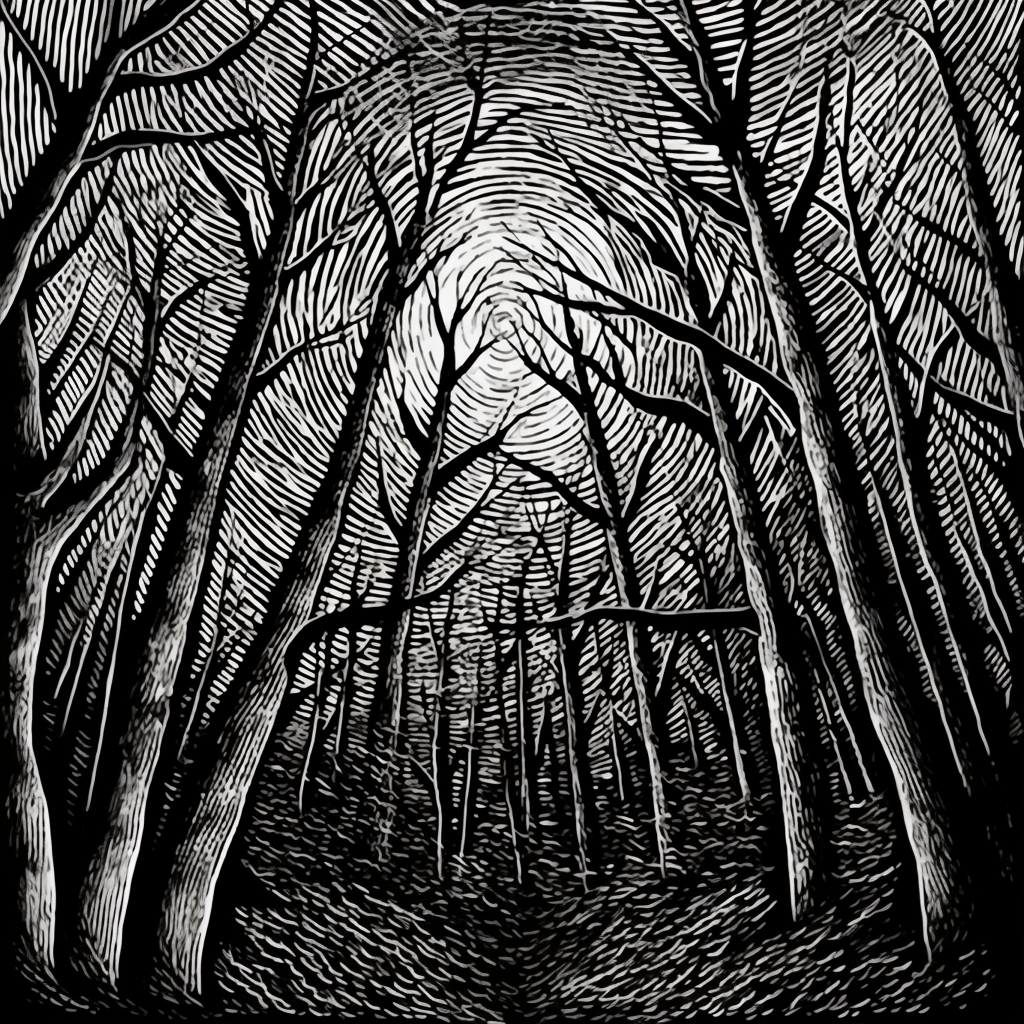Each day after the solstice adds mere seconds of sun. Then, like a stream gathering tributaries, the solar flood swells—first a minute more, then two. Morning arrives earlier, and darkness retreats later into the afternoon. The sun climbs higher, shining through kitchen windows to warm a wooden tabletop. Now, at its peak flow, light pours three minutes more into each cold day, its stark winter white softening into the yellow of spring.
Birds, those closest to the light, notice first. Though the winter earth lies brown and dormant below, Canada Geese now cast their wide arrows across the sky, following the river north.
Light drums the rhythm of seasons. Warm day or cold, all green things, the light eaters, march to its beat. Trees shed leaves in fall’s warmth or frost alike, answering not to temperature but to light’s retreat. Come spring, it’s light that whispers them awake.
My son and I follow the worn path up the slope beyond my kitchen window. Cold bites our faces and numbs my hand on the power wheelchair’s controls. Freedom from the house’s walls and the taste of fresh air make the chill worthwhile. A flash of color catches my eye through the winter-worn grass—vivid against the muted landscape. At first glance, it seems like a candy wrapper, perhaps freed from our garbage by raccoons and carried by the wind. But curiosity draws us closer.
There, cradled in tattered grass, a Snow Crocus lifts its face skyward. Six purple petals, each edged in white like dawn touching clouds, open no wider than my thumb. Golden stamens reach for the pale sun. Two blade-shaped leaves, blue-green and marked with a single silver stripe, part the brown thatch. Against the dull earth of the broad lawn, the bloom burns like a single birthday candle flame.
These mountain wanderers aren’t valley natives. They are imports from distant Balkan peaks, pressed into Pennsylvania clay by gardeners who have been long since buried themselves.
Are these the same flowers those old hands planted? What I know of time and mower blades suggest otherwise. Yet these small purple prophets rise each spring from the same spot, carrying forward an unbroken lineage. Each bloom is both new and ancient—like light touching water.
Watch closely. The flower before us isn’t a thing, but a dance. It’s the meeting of soil and sunlight, the tilt of earth’s axis, the memory of mountain winds in its genes, and countless springs selecting for cold-hardy blooms. These elements combine to paint purple against winter’s canvas for a few precious weeks. Then conditions shift, and the flower trades its fleeting beauty for tomorrow’s promise, becoming next year’s bulb sleeping in dark soil.
The world flows like this. Nothing is fixed; everything is becoming. The drab winter lawn greens beneath the warming sun. The forest sheds and regrows its leafy coat. Deer emerge from the woods as spotted fawns, become mothers, and are consumed by scavengers on the roadside. My son stretches toward manhood as my own body falters. We’re all spinning in this sacred dance of becoming—combining, blooming, fading, recombining, transforming, renewing. This is our true nature. What exists passes like spring snow. What becomes flows like the stream—always fresh, always itself, never the same.
My son kneels to examine the bloom, his breath clouding in the chill air. He uses fallen twigs to build a miniature fence around it. In this moment, we connect to all who have paused here before us, surprised by spring’s first precocious flower. Time feels thin as morning frost—those past gardeners just around winter’s corner, watching their own children discover these same brave blooms pushing through winter’s cold earth.
